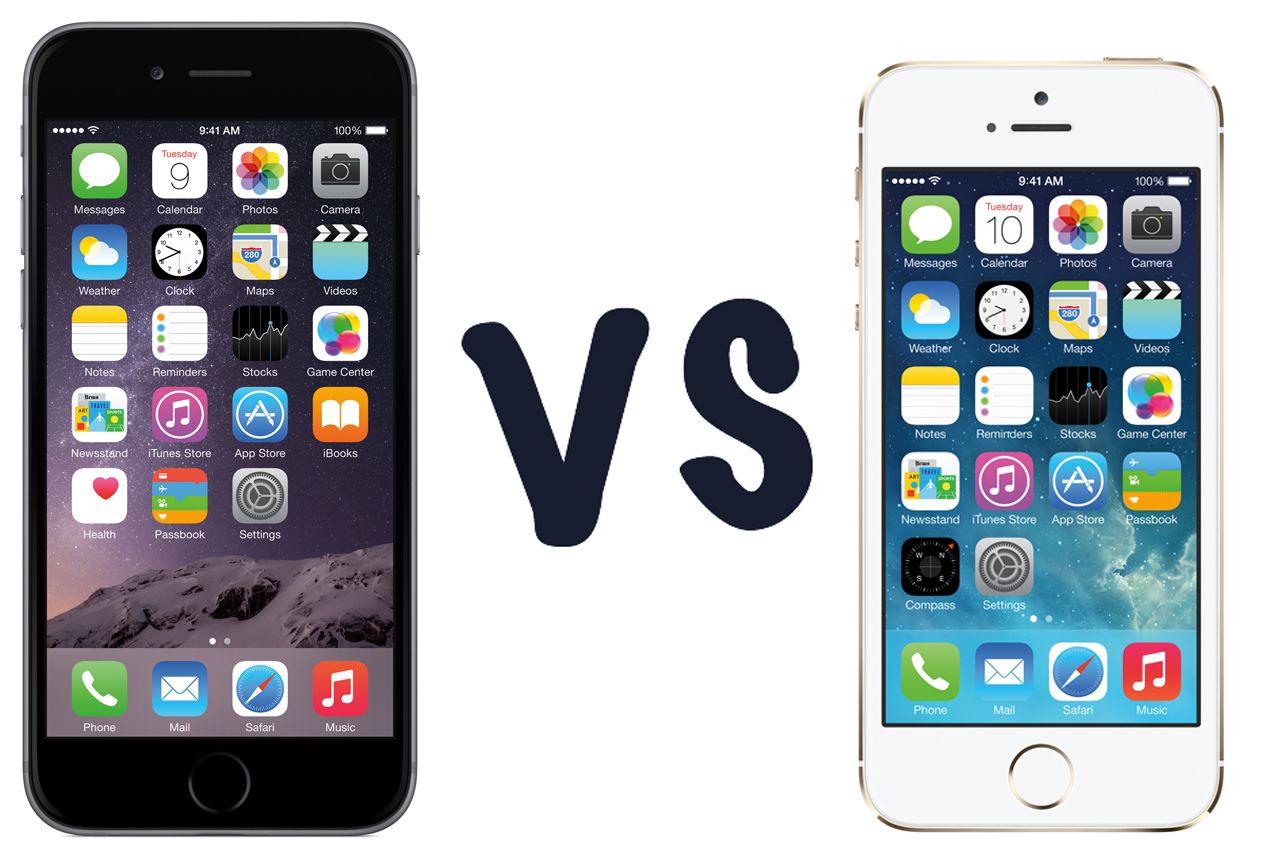Apple has officially announced two new iPhones, putting an end to all the rumours.
The smaller iPhone 6 smartphone will come with a bigger 4.7-inch display, along with all the latest iOS 8 software and a new chip, but how does it compare to the iPhone 5S?
We put them up against each other to see what the differences are and what Apple has changed with the new device.
The iPhone 6 is slimmer
The new Apple iPhone 6 measures 6.9mm slim compared to the iPhone 5S that had a waistline of 7.6mm.
Although exact measurements haven't been detailed for the rest of the footprint, it's fair to assume the new device is larger than the iPhone 5S but with a larger screen, this was to be expected.
In terms of design, the same premium look with an aluminium build has been employed to the iPhone 6 but it offers a rounder shape to the squarer iPhone 5S.
The display is bigger and better on the iPhone 6
The iPhone 6 features a larger 4.7-inch display compared to the 4-inch screen found on the iPhone 5S so you'll get 0.7-inches more with the new device.
In terms of resolution, the iPhone 6 takes a step up here too with a 1334 x 750 pixel resolution compared to the iPhone 5S's 1136 x 640 resolution but both deliver a pixel density of 326ppi so you'll get the same sharpness and detailed on the new device as its predecessor.
The iPhone 6 is much faster
When it comes to the processor, Apple has unsurprisingly introduced a new chip to the iPhone 6.
The iPhone 6 comes with the latest A8 chip that offers 64-bit architecture, while the iPhone 5S came with the A7 processor.
According to Apple, the new A8 chip is 25 per cent faster and has 50 per cent faster graphics than the iPhone 5S.
Apple also updated the Motion M7 to Motion M8 in the iPhone 6, meaning the new device will be able to estimate distance and measure relative elevation changes from air pressure thanks to a barometer that is included now too.
Better camera on the iPhone 6
The iPhone 6 camera has also seen an improvement over the iPhone 5S, but not in terms of megapixels.
The iPhone 6 will come with an 8-megapixel iSight rear camera, True Tone flash and an f/2.2 aperture, which is the same as the iPhone 5S.
Things have changed a little though as Apple has introduced a new technology called Focus Pixels, which means the lens can move in and out of phase and therefore detect if an object is in or out of phase. There is also Phase Detection Autofocus on board too.
The company also introduced advanced face detection on the new iPhone 6, as well as "Best Shot" and 1080p video recording is now possible at 30fps or 60fps, along with slo-mo video recording at 240fps compared to 120fps on the iPhone 5S.
You'll also see a difference in the FaceTime camera as the iPhone 6 offers FaceTime HD with a new sensor that brings 81 per cent more light, according to Apple.
Face Detection has also been improved on the new iPhone 6 and there is a new Burst Selfie mode and single-shot HDR photos compared to the iPhone 5S so plenty of change in the camera department.
Better battery and more storage on the iPhone 6
When it comes to battery and storage, Apple has improved on these too with the iPhone 6.
The iPhone 5S offered up to 10 hours talk time on 3G, up to 10 hours video playback and up to 40 hours audio playback.
The iPhone 6 on the other hand is said to deliver up to 14 hours talk time and up to 11 hours video.
In terms of storage, there is still no microSD present, but the iPhone 6 will come in 16GB, 32GB, 64GB and 128GB storage options, while the iPhone 5S only went as high as 64GB.
The iPhone 6 will launch with iOS 8
The iPhone 6 will launch with the new iOS 8 platform which brings a number of new features with it including the ability to share audio messages, a new keyboard called QuickType, the new iHealth app and notification centre widgets.
There is also a new controller for one-handed use with the new software.
Although the iPhone 5S is currently on iOS 7, you will be able to download the new software from 17 September, which is two days before the iPhone will be released.
There is a new payment method on the iPhone 6 called Apple Pay that uses NFC, Touch ID and a Secure Element chip, allowing you to pay for things in a similar way to how contactless works but this won't work on the iPhone 5S so you'll need to upgrade if you want this feature.
The iPhone 6 also offers new advanced wireless at 150Mbps LTE, compared to 100Mbps on the iPhone 5S across 20 LTE bands instead of 13.
Conclusion
As you would expect, the iPhone 6 tops the iPhone 5S in many ways.
The display is bigger but not sharper, while the new design is slimmer than the previous handset.
There is a better camera on board, a longer lasting battery and a faster chip, along with the latest software.
But with the new iPhone 6 starting at £539 offline, it's your call if you can justify an upgrade.

